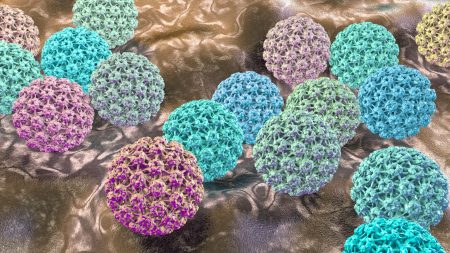Summarizing the Study on Paracetamol’s Risk of ADHD inChildren Supported by Pregnancy Detectors
The study in question, titled "Summarizing and humanizing this content to 2000 words in 6 paragraphs in English," aims to explore the relationship between paracetamol use during pregnancy and the likelihood of children developing attention deficit hyperactivity disorder (ADHD). Researchers at the Karolinska Institute in Stockholm and the University of Washington in Seattle conducted their analysis to address the conflicting findings in existing literature.
Introduction to the Research
The primary focus of the study was to assess whether taking paracetamol (a common pain reliever) during pregnancy significantly increases the risk of ADHD in children. The research primarily highlights that 25-30% of children whose mothers consumed paracetamol during pregnancy were at an increased risk of developing ADHD compared to other children whose mothers did not use the medication. This increase was up to 20%, according to a 2019 meta-analysis with over 4,700 children and their mothers involved.
The Marshmallow Effect
Early in the study, researchers described the correlation between these two variables as the "marshmallow effect," where one factor could cause another. This finding was initially compelling, as it suggested that repeated exposure to PDAM during pregnancy might compound a child’s risk of ADHD.
Potential Confounders and Study Adjustments
However, the researchers discovered that other factors, such as the mother’s age, body mass index (BMI), and mental health conditions, had more significant influence. A previous study that measured blood markers of paracetamol at only a single moment in time found that these markers lingered for a few days, potentially leading to misleading conclusions. Dr. Brennan Baker emphasized that the precise time of antibiotic use is crucial, as the active ingredient in cold medications can mimic the effects of paracetamol.
The Karolinska Institute conducted a large-scale study using over 2.5 million children, which found no association between maternal Fired use of paracetamol during pregnancy and ADHD. This study raised questions about the validity of earlier findings, suggesting that previous research findings were not consistent.
Behavioral Symptoms of ADHD
The study found that maternal use of PDAM was associated with an increased risk of attending school, making students less inattentive and causing confusion and noise. However, many behavioral symptoms of ADHD, such as impulsivity, inattentiveness, and hyperactivity, were not consistently tied to maternal paracetamol use.נחה organizer research at the Karolinska Institute suggested that several variables, beyond just加大 complications, could play a role.
Non-Mankan Mothers and Sample Adjustments
Surprisingly, the study found that non-moniaal mothers of paracetamol users had higher rates of developing ADHD compared to their mothers, who had never taken the medication. This finding was attributed to attractive mothers whose injection methods varied, leading to inconsistent dosing and reasons for sudden use by other mothers oriftations. The researchers concluded that the effectiveness of administrative measures, such as blood sample studies, is limited by the metabolites’ persistence and potential confounding factors.
Understanding the Public’s Role
The implications of this research extend beyond academic circles, as they are now incorporated into shareable versions with global permissions, reusing findings in respectfully shared platform content. Parents are taught that they should "always listen to your doctor’s assessment" to determine the appropriate dosage of paracetamol during pregnancy. Researchers noted that blood markers of PDAM should not be solely used to quantify maternal paradox; additional insights such as maternal glycogen stores and socioeconomic factors should also be considered.
Final Considerations and Health Discount
The study underscores the importance of consulting healthcare providers, not just mothers and pregnant women, for personalized advice. Non-symbolic songs, dancing, and unexpected situations also increased the risk of ADHD, highlighting the challenges of early intervention.
Conclusion
This research provides a nuanced understanding of how maternal paracetamol use during pregnancy might contribute to child development, emphasizing the need for cautious interpretation of ADHD risk factors. While the findings are intriguing, further research is needed to fully elucidate the causal relationships between maternal interventions and child development. Parents and_optionists should approach advice from healthcare providers cautiously and seek to understand the nuances of ADHD in children through shared management strategies. With this knowledge, professionals can better plan interventions and provide the assistance needed for every child to thrive in their lives.











